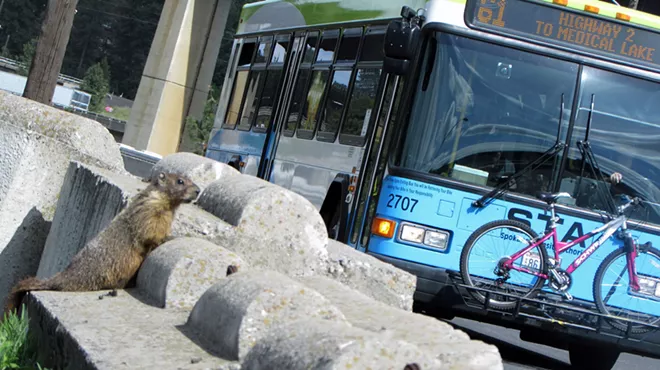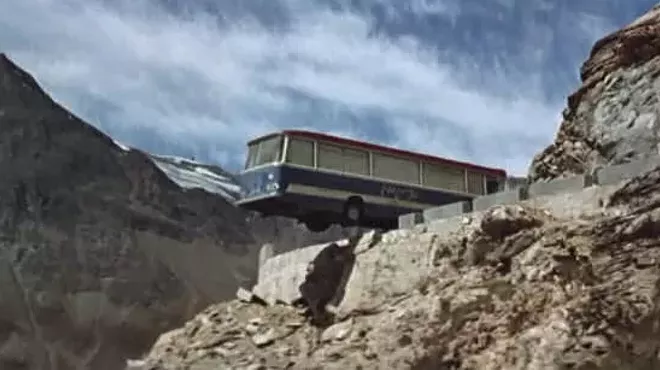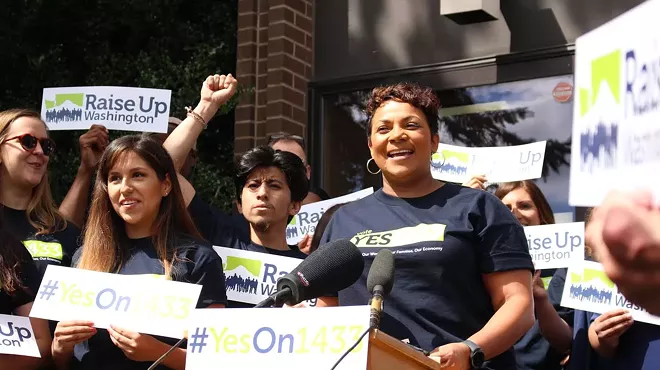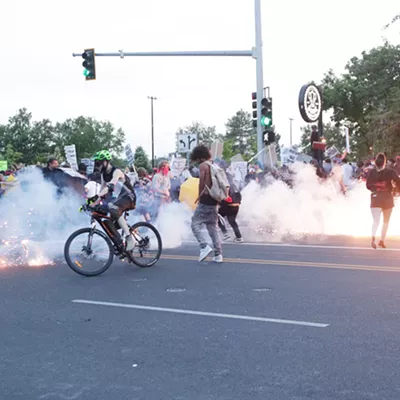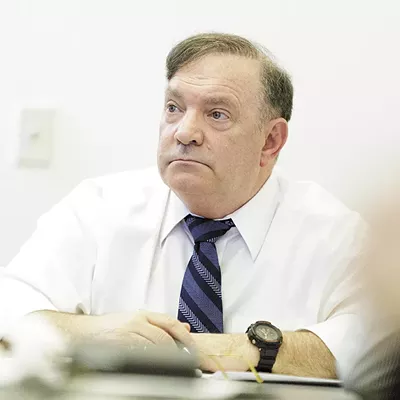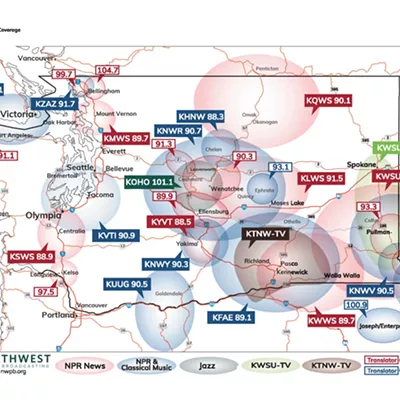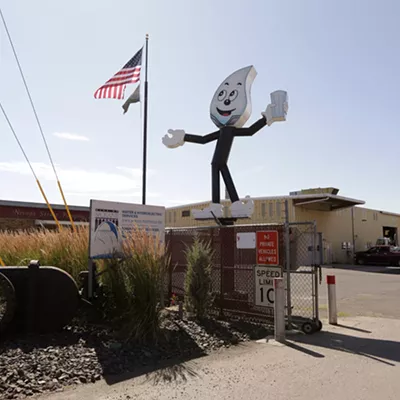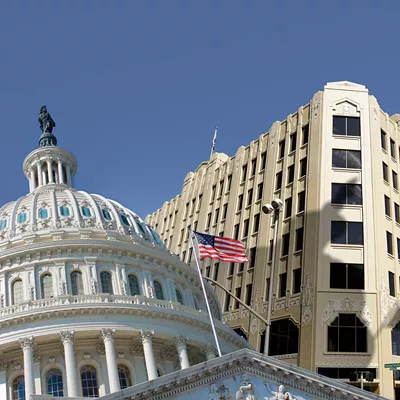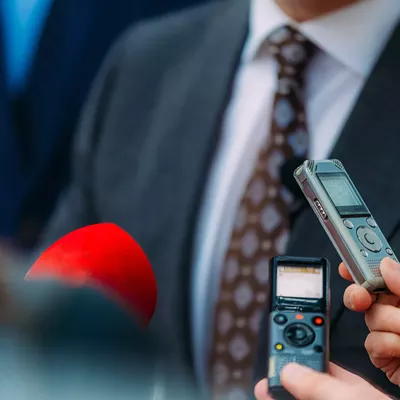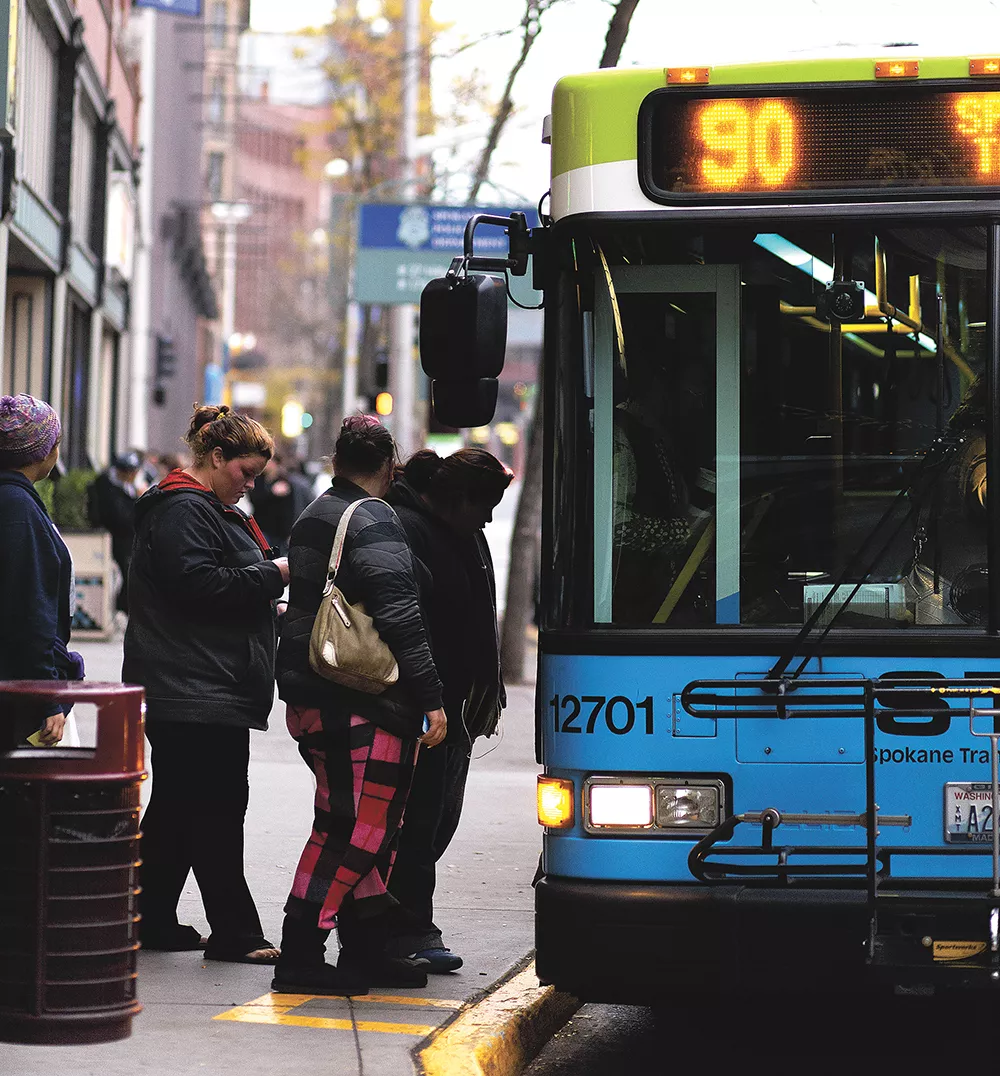
When your ballot measure loses by only 572 votes — in a county of nearly 500,000 people — you could take it as just bad luck, and put the same proposal forward again while hoping for a different outcome. Or you could take it to mean that practically anything you would have done differently might have made the difference, listen to criticism and make alterations.
That's the choice that the Spokane Transit Authority faced in relaunching its ballot measure that oh-so-narrowly failed in a special election in April 2015.
The new measure, on the November ballot this year, presents a list of 25 projects nearly identical to the failed proposal. The measure would still extend bus service to 11 pm on Saturdays. It would still pay for new routes, like the one on Indiana Avenue between Greenacres and the Spokane Valley Mall. And it would still pay for the operation of the Central City Line, a high-frequency electric bus route between Browne's Addition and Spokane Community College.
The big difference? They're asking for a lot less taxes than last time.
"The biggest thing that I've heard is 'thanks for listening,'" says STA board chair Al French, a Republican county commissioner. "Every one of the complaints and concerns that were raised about the ballot measure for last year, we've addressed."
WHY THE PREVIOUS MEASURE FAILED
A year and a half ago, most of the media coverage of STA's proposal measure focused on a single project: the Central City Line.
"I think it was a disservice to the whole plan, for the whole region, to only talk about one project," says STA CEO E. Susan Meyer.
Three years ago, STA envisioned the proposal as an electric trolley bus on overhead wires, designed to look like a sleek train. Meyer described it as a revolutionary project that would spark economic development along the route and make Spokane the first on the "crest of the wave."
But by the time the measure was put on a ballot, cost concerns caused the board to shift the proposal away from a trolley bus and toward an electric-bus system with charging stations on each end. Without explicit pushback from STA, critics continued to inaccurately mock the project as a "trolley."
Former County Commissioner Todd Mielke, who opposed the project, suspects that the sleek renderings of what the buses could look like backfired.
"The depictions were very futuristic and looked expensive," Mielke says. "I think that did influence some voters."
Still, while the Central City Line drew most of the headlines, opposition came from a deeper place.
A survey after the ballot measure's failure showed that 5 percent of the voters opposing the measure cited the Central City Line as a major reason they opposed it. But 40 percent cited concerns about the 3/10ths of a percent sales tax hike.
"The issue was the cost," says Mielke, now the CEO of Greater Spokane Incorporated. "It [was] one of the largest tax increases this area has seen."
Despite the measure's promises to boost economic development, GSI, the region's economic development agency, declined to endorse it then.
Compounding the trouble, French says, was the ballot measure's timing. It came shortly after the STA's decision to put it up for a vote, leaving little time to campaign or explain. Not only that, but just a few months earlier, voters had approved a slew of big school bonds, leaving them feeling all taxed out, French says.
"Right on the heels of paying Uncle Sam your last nickel or shilling was an STA ballot measure," he says.
HOW THE REBOOT IS DIFFERENT
In the year and a half since, however, the STA board has scrambled to bring the price of the ballot measure down.
Normally, lowering the price tag of a ballot initiative would require slashing the scope of its projects. Not this time. In 2015, the state legislature approved a major transportation package that included $15 million specifically for the Central City Line. Combined with other state and federal grants, it meant that STA wouldn't have to spend a dime of local money on constructing the project. They'd just have to pay for operational costs.
Even more crucially, STA changed its budget assumptions: It had been relying on pessimistic projections for tax revenue growth. But with the economy improving, the board voted to shift to assume that sales tax revenue would grow at a more average pace.
Combine that with decreased operating costs, and suddenly you don't need to raise taxes by 3/10th of a percent. You can get by with 2/10ths — or less.
The new measure would implement the tax hike in stages: Initially, taxes would only go up by 1/10th of a percent. They wouldn't go up to 2/10ths of a percent until 2019.
For a number of community groups, these changes made a big difference.
"Those that were lukewarm or neutral last time are now in full support," French says.
Last year, Mike Allen, a former STA board member and city councilmember, had written a Facebook post outlining the reasons he opposed it. But with the smaller tax increase giving STA more flexibility in the future, Allen has endorsed the measure this time. The Spokesman-Review editorial page had opposed it the last time, but endorsed it this time as well. Perhaps most crucially, GSI has come out strongly in support of it, noting the "large strides" STA took to improve the measure.
"The business community has said the ability for people to move around downtown through the Central City Line makes sense," Mielke says. "My take on my board is they felt the financial calculations make more sense with this proposal than it did in the previous."
Not everyone is on board. County Commissioner Shelly O'Quinn remains opposed, arguing that the full tax increase isn't necessary to fund the plan. While Spokane Valley City Councilman Ed Pace likes STA's overall plan — in particular the new bus route to Indiana Avenue — he would prefer to find some way to accomplish it without tax increases.
"I think it will be good for the city of Spokane," Pace says of the Central City Line. "I think the city of Spokane should pay for it."
This time around, Meyer feels the media coverage has improved.
"We are heartened that people are talking about the whole 10-year plan now more than they were last year," she says.
Still, misconceptions continue to abound. Perhaps the most common one is that using electric buses on the Central City Line will cost STA more than using traditional diesel buses.
While the route's higher frequency and longer hours will cost more than a conventional route, an STA study shows that making the line electric will actually save in operational costs.
"The cost to operate and maintain an electric bus is lower than to operate and maintain a diesel bus," Meyer says. "Period."
It's the capital costs — buying the buses, building the charging stations — that are more expensive than diesel bus lines. Constructing the Central City Line would be more expensive, but that will be paid for with state and federal money, not local taxes.
Some opponents, like Josh Kerns, running for the county commission, dismiss the notion that costs to the state and the federal government shouldn't be considered.
"People say it's 'free money,'" Kerns says. "It's not free — state and federal money all comes from the same place."
DOOR TO DOOR
The STA measure's campaign manager, Adam McDaniel, grabs his leg and lifts up his foot to show the soles of his shoe. "No tread, whatsoever," McDaniel says. "I started in mid-July doorbelling."
McDaniel estimates he's knocking on 80 to 100 doors a day. Spokane County may have a population of nearly half a million, but it's still a place where door-knocking can matter more than endorsements or TV ads.
Spokane is a fairly conservative county, so McDaniel tells its residents that the measure isn't just about improving transit: It's about decreasing congestion.
"This plan will take 3 million-plus cars off the road in the next three years," French says.
Putting the measure on a general election ballot in a presidential year means that at least twice as many people will likely vote on it as did in last year's special election in April.
"This will be the largest number of [people] voting for transit in Spokane history," McDaniel says.
And if it fails yet again?
"That's democracy," he says. ♦
For the full list of the 25 different projects that would be paid for by the proposition, visit stamovingforward.com.



